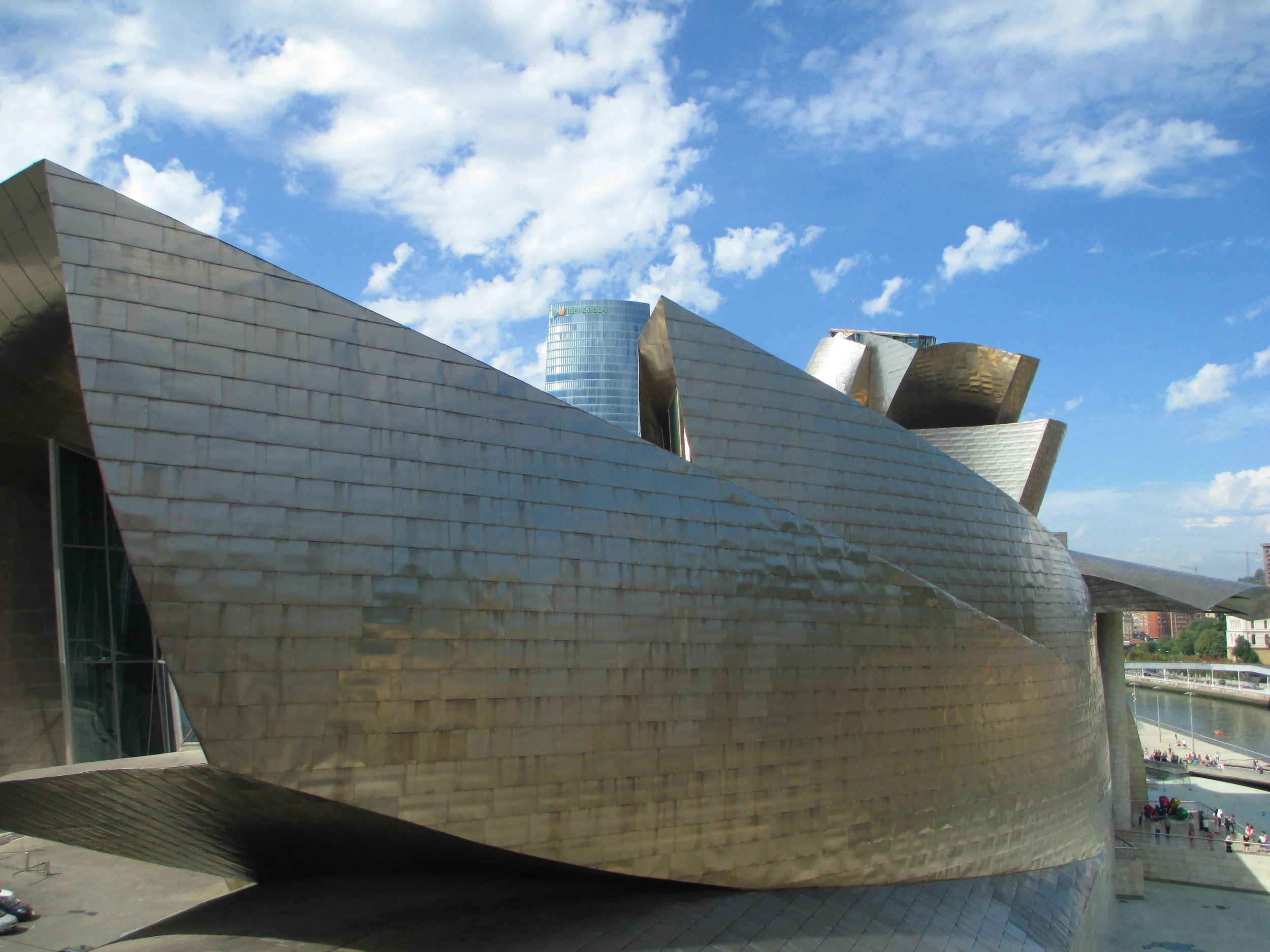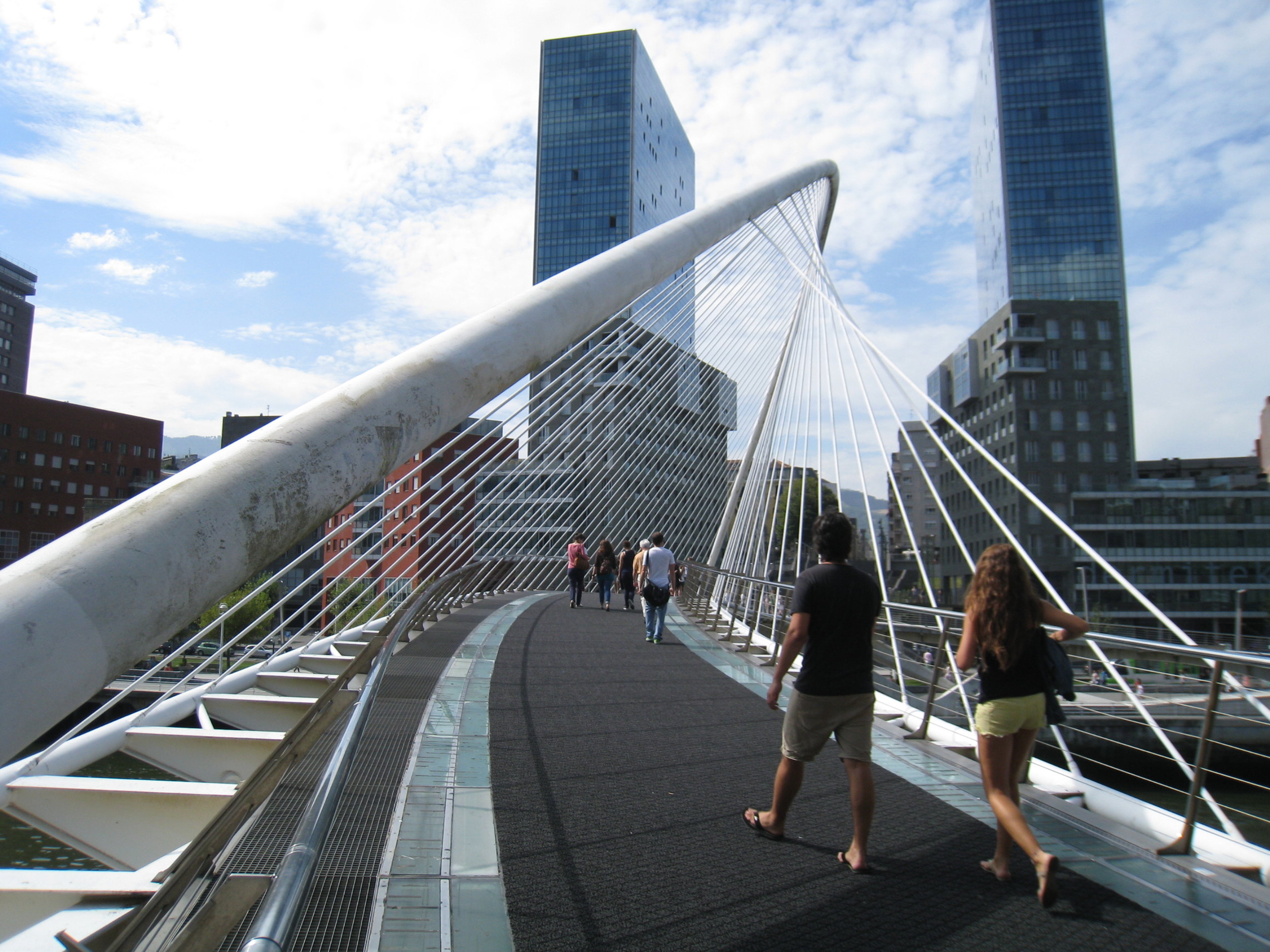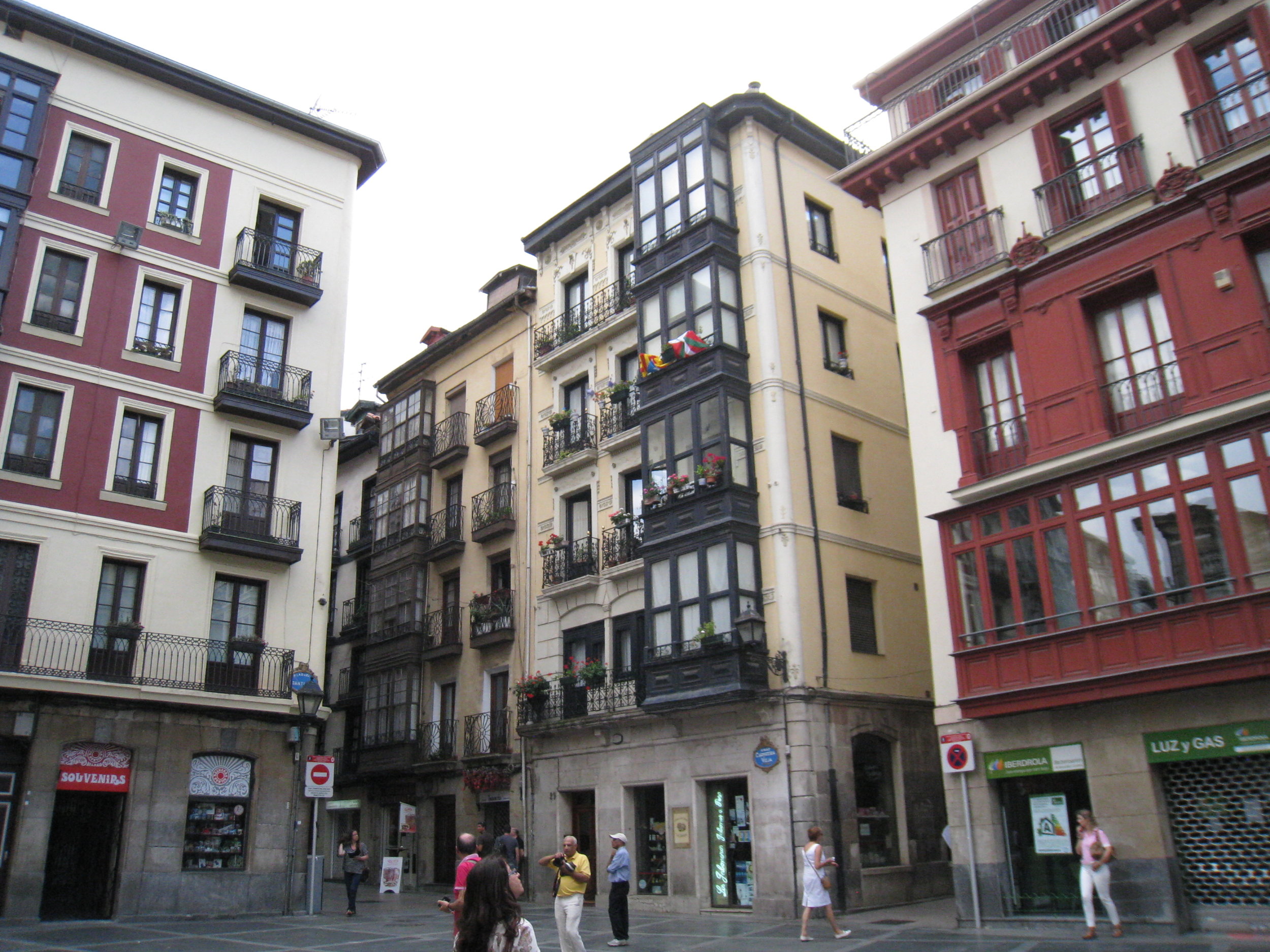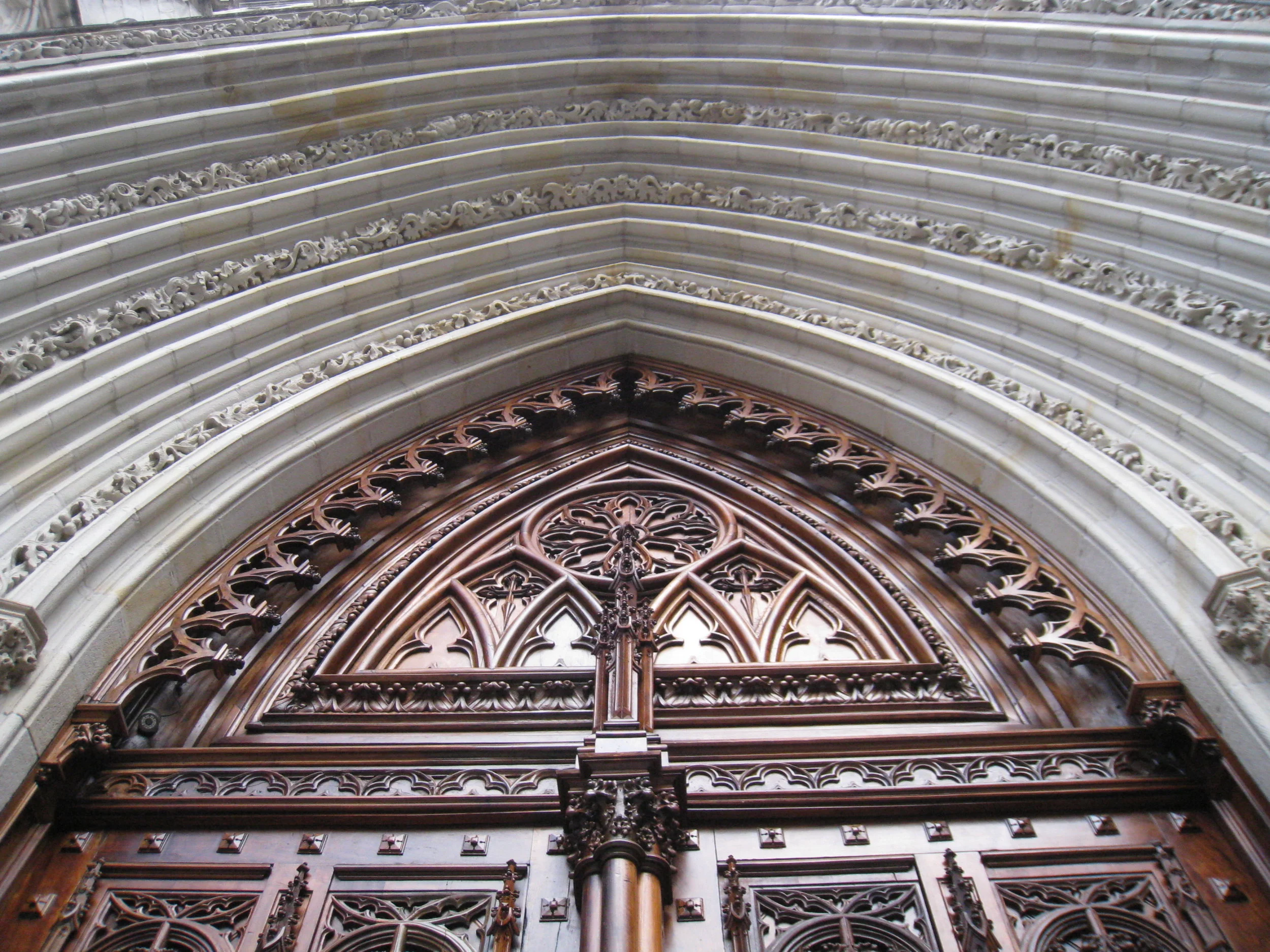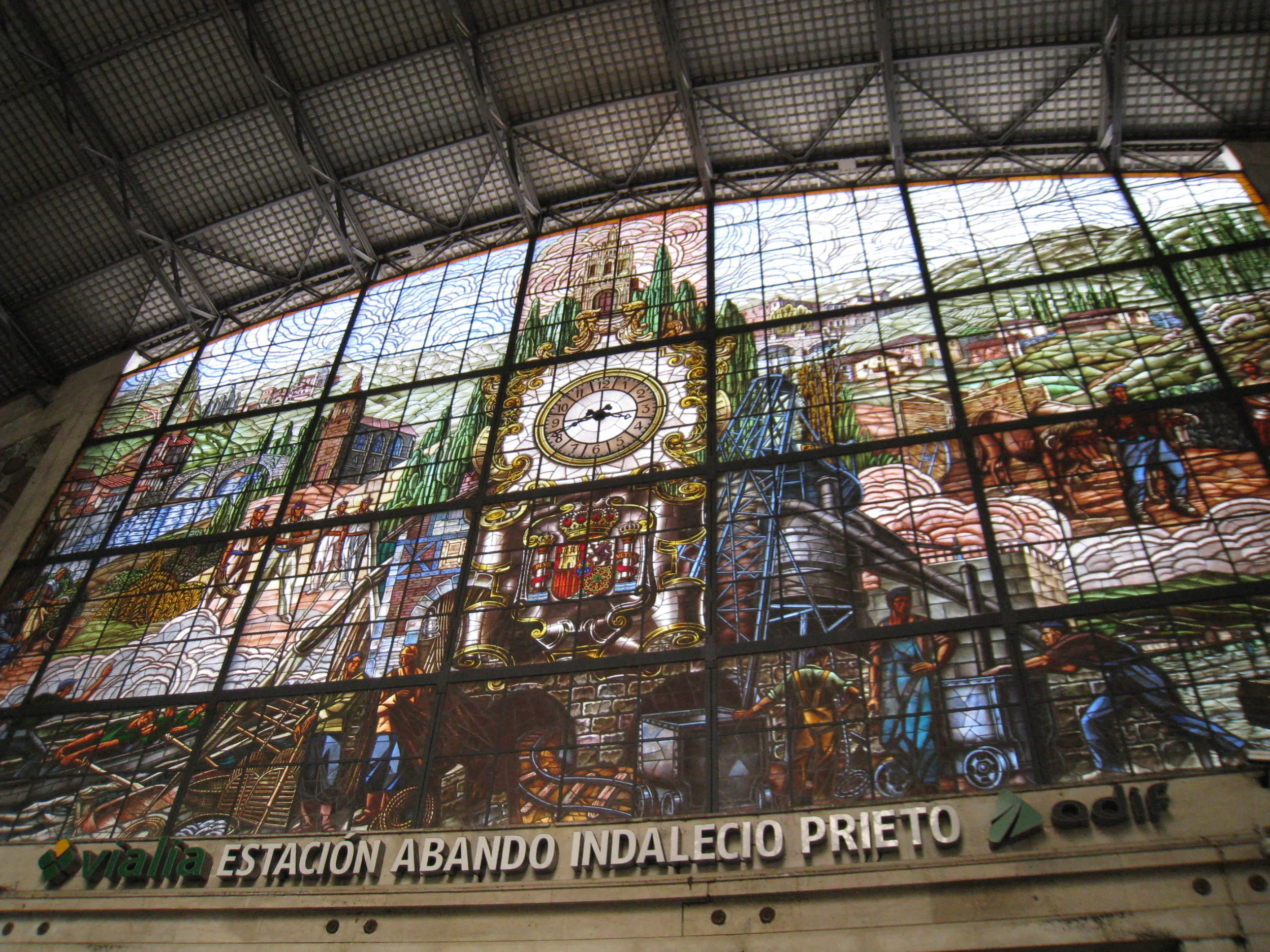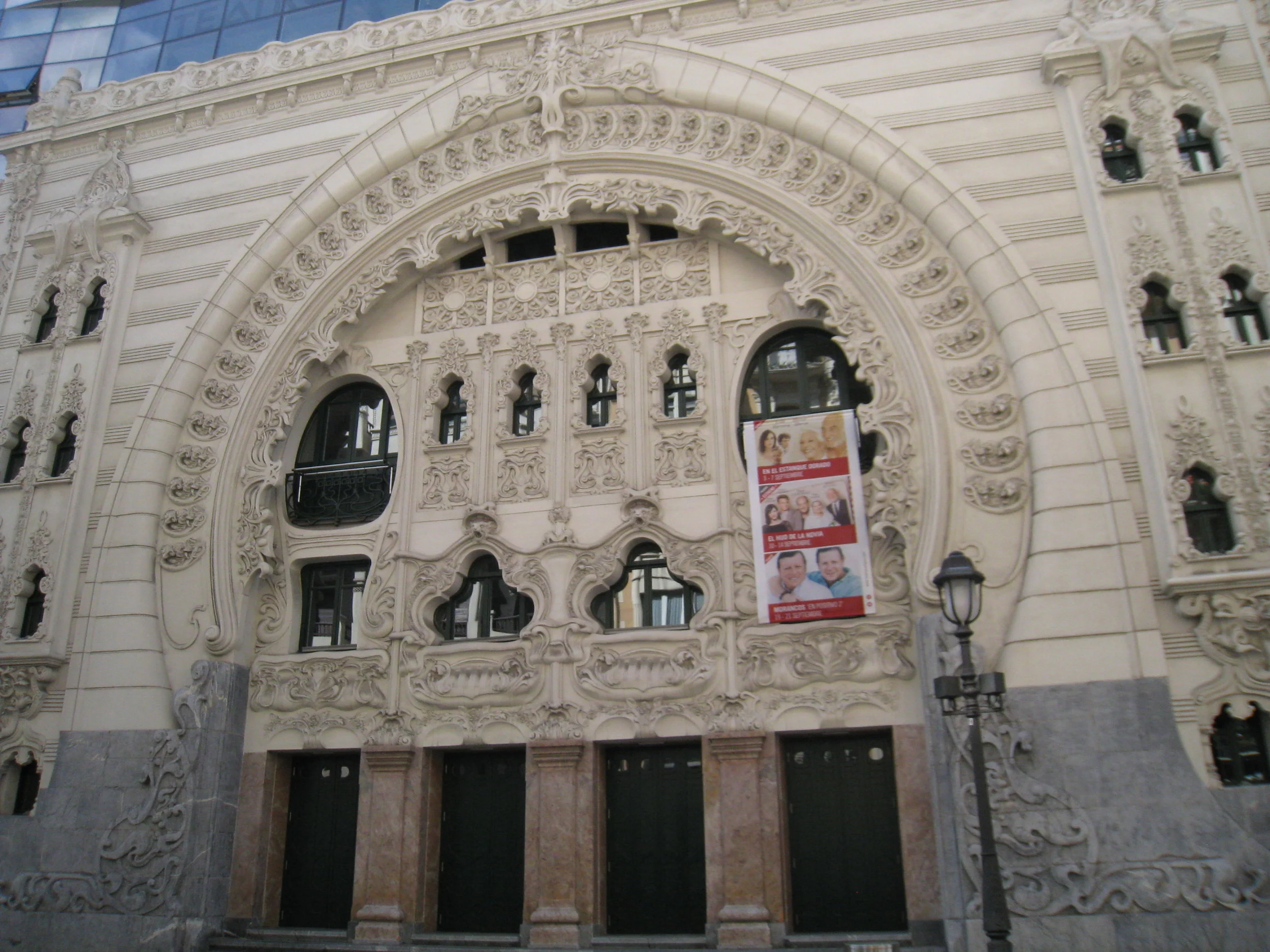Bilbao: Where Tradition and Innovation Rule
by Shankar Chaudhuri
Located in the Bay of Biscay on Spain's Atlantic coast, Bilbao is a striking blend of tradition and innovation. Bilbao’s urban renewal beginning in the mid-90s has led to the rise of several striking structures that have transformed Bilbao’s landscape and its look and feel. But what is so fascinating about this facelift is that it doesn’t seem at all discordant or out of place. New Bilbao in many ways is as reflective of its own heritage as it’s expressive of a mindset that is open and flexible to change.
Here are some of many things to see/do in Bilbao that should give every visitor an experience of how the city has found a perfect balance between old and new, between tradition and evolution.
Frank Gehry’s masterpiece is a celebration of Bilbao’s great maritime past (photograph by Shankar Chaudhuri)
Get a sense of Bilbao’s maritime past in Gehry’s masterpiece
Today the name of Frank Gehry-designed Guggenheim Museum is instantly associated with Bilbao. Opening in 1997, the museum has been recognized as one of the most important architectural constructs in the world. Made of titanium panels, the museum showcases works of renowned architects from all over the world. While to naked eyes the museum might simply appear as a monumental and grandiose piece of art somewhat out of place, a closer look reveals how the structure is in perfect harmony against its setting and stands as a grand tribute to Bilbao’s maritime past. As Gehry himself explained, the design is based "on the port that it was and the city it is," symbolizing a ship anchored on the banks of the Nervión with its panels adorned with fish scales. It’s not hard to understand why Bilbainos perceive Gehry’s creation as a celebration of Bilbao’s past, and why they have embraced it so much as their very own.
Inside the museum one can see the works of internationally famous artists such as Willem de Kooning, Mark Rothko, Andy Warhol, Anish Kapoor and many others.
Bilbainos have fallen in love with Jeff Koons-designed “Puppy” (photograph by Shankar Chaudhuri)
Enjoy the view of Jeff Koons-designed “Puppy”
Directly in front of the Guggenheim Museum, stands an enormous Jeff Koons-designed flower-decked sculpture. It was originally intended as a temporary exhibit for the inauguration of the museum. However, the Bilbainos fell in love with it so much that that it became a permanent exhibit. Today, “Puppy,” as it is affectionately called, is the mascot of the city and the Bilbainos amusingly refer to the Guggenheim as the house they built for their beloved pet. In their mind, the Puppy and the Guggenheim are synonymous.
Calatrava designed Zubizuri Bridge is a perfect complement to the Guggenheim (photograph by Shankar Chaudhuri)
Catch a panoramic view of Bilbao from atop a masterpiece
Along with the Guggenheim, the Santiago Calatrava- designed Zubizuri Bridge (literally meaning White Bridge) spanning the Nervion has become emblematic of “new’ Bilbao. With its curvature, flowing white arch and glass floor, the bridge uniquely complements the organic floating curves of Guggenheim’s titanium panels while presenting a special aesthetics of its own. The sweeping view of Bilbao from the bridge is breathtaking. In time, the glass floor had to be covered with a carpet as it would often become slippery during or after rain. The fringes along both sides of the floor had to remain exposed to let floodlight in at night. While the new configuration has somewhat compromised the fully-lit nightly view of the bridge, it has also ended up rendering a dreamy and esoteric quality to it.
One of the forty three dazzling columns in Azkuna Zentroa (photograph by Shankar Chaudhuri)
Be prepared to appreciate the unique designs at Azkuna Zentroa
Formerly known as Alhóndiga Bilbao, Azkuna Zentroa is a vast culture and leisure center located in the city’s old warehouse. The modern structure was designed by the French architect Philippe Starck. The most striking feature of the structure is that it rests upon 43 pillars or columns, each with a distinct and unique design of its own. Another important highlight of the building is a swimming pool with a glass bottom that is viewable from the ground floor. The vast complex is made up of a number of emporiums, boutique stores, emporiums, gyms, and leisure centers.
Leisurely afternoon stroll in Old Bilbao (photograph by Shankar Chaudhuri)
Get a feel of old Bilbao by getting lost in the streets of Casco Viejo
With its narrow winding streets, and colorful architecture, Casco Viejo, Bilbao’s old town, is an interesting spot to explore the city’s past. Plaza Nueva sits at the heart of the Casco Viejo and is the ideal place for a coffee break in one of the number of cafes, bars or restaurants. Built in 1851, elegant buildings with neoclassical arches, and arcades give the plaza a timeless look and feel. Keep your eyes open and you will also come across thought-provoking artwork on street walls and arcade ceilings.
Street art on an arcade ceiling in Old Bilbao (photograph by Shankar Chaudhuri)
Bilbao Cathedral is dedicated to St. James and is a tribute to Gothic and neo-Gothic architectural styles (photograph by Shankar Chaudhuri)
Appreciate the beauty and solemnity of the Cathedral de Bilbao
Towering above Casco Viejo is the Catedral de Santiago, Bilbao's oldest church. Consecrated to Santiago (Saint James the Great), Bilbao’s cathedral has been an important point of transit for pilgrims who follow the Way of Saint James from the northern side. Above the main entrance, one can spot scallop shells, symbols of Santiago (St James). The Cathedral is a fusion of architectural styles of different periods, and helps to understand the mindset of a city that has been so receptive to new and innovative styles for many of its landmarks.
Bilbao’s main train station’s stained glass window is a tribute to the daily life of Biscayan workers (photograph by Shankar Chaudhuri)
Head to the Indalecio Prieto station to admire the beauty and details of the stained glass window
A beautiful stained glass window overlooks the atrium at Bilbao's Estacion de Abando Indalecio Prieto (also known as Bilbao-Abando), the city’s main and most important train station. Designed by the painter Caspar Montes Iturrioz, and completed in 1948, it’s a kaleidoscope of the typical life of Biscayan workers in the form of motifs covering various aspects of life. Among the well-known depictions of sites are those of the Basilica of Begoña, and the bridge of San Antó. Daily lives of farmers, and steel workers, as well as recreational activities such as fishing and sport, also inform themes of the artwork. It occupies the entire wall of the passenger access from the platforms to the lobby and measures 50 feet wide and 34 feet high. For a close up view, take the elevator to the second floor.
The Campos Elios theater is a grand merge of art and technology (photograph by Shankar Chaudhuri)
Catch a performance at the Campos Eliseos Theater
The Campos Eliseos Theater is a great example of art nouveau in architecture and is also a tribute to Spain’s Moorish heritage with a façade made of horseshoe arch decorated with plant and animal motifs. Designed by architects Alfredo Acebal and Jean Batiste Darroguy, it opened in 1902. Having gone through years’ of renovation, it is the most technically advanced theater in Spain. It occupies a surface area of more than 7000 square meters, and has a capacity of 800 seats with spectacularly carved tiered balconies and a high ornate ceiling.
Both presentation and quality define Pinxtos at Las Cepas (photograph by Shankar Chaudhuri)
Finish your day with some of Bilbao’s best pinxtos (tapas) at Las Cepas
Bilbao along with San Sebastian, Vitoria-Gasteiz, Logrono, Pamplona, Madrid and Seville is known to be the home to some of the best and finest tapas in Spain. I have had the privilege of checking out tapas in all these places except Vitoria-Gasteiz. I must admit that Las Cepas in Bilbao stands out as perhaps the most perfect destination for tapas that I have visited. Las Cepas’ style and décor perfectly complement the quality of tapas made of the freshest of ingredients - artichokes, tuna, octopus, eel, mushrooms - to be washed down with a glass of well-selected wine or uniquely Basque txakoli. The use of whole/multigrain bread gives its tapas an extra dimension. Just about a stone’s throw of walk from the Guggenheim, Las Cepas was introduced to me and my friends by a Bilbaino and we couldn’t be more thankful for it.
